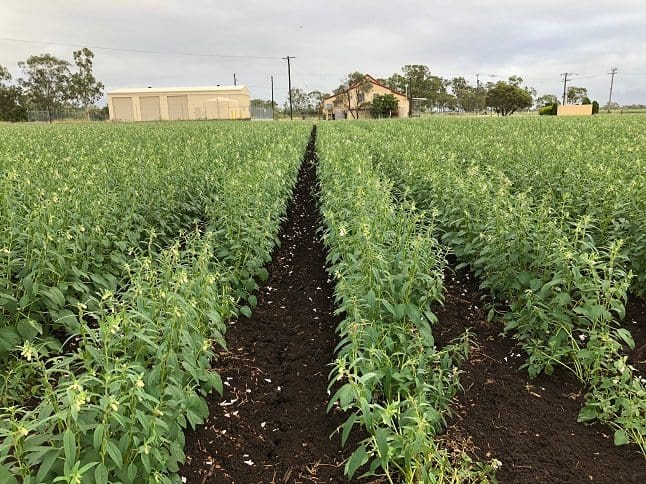
AUSTRALIA is well positioned to take advantage of long-term and sustained growth in global demand for sesame if it can establish a larger domestic supply.
Through the ‘Spicing Up the North’ research project sponsored by the CRC for Developing Northern Australia (CRCNA), economists at CQUniversity in Rockhampton have estimated that global production will almost double over the next 20 years as farmers attempt to keep pace with booming demand.
In 2017 the world production of sesame was approximately 5.5 million tonnes (Mt), which is expected to grow to 9.26Mt by 2040, with the demand for sesame in China alone expected to reach 2.56Mt by the same time.
CQUniversity Associate Professor Delwar Akbar said the three-year CRCNA project would be investigating the suitability of five high-value spice crops – cumin, fennel, kalonji, caraway and black sesame – for inclusion in broadacre crop rotations in Northern Australia.
“In 2017 about 57 per cent of global sesame production was in Africa and 40pc in Asia, but with China, Japan and Korea among the largest importers of sesame, Australia may have an advantage in both our geographic proximity and our clean green image, especially given that we have free trade agreements already in place with these countries,” Dr Akbar said.
“The growing world population, changing consumption patterns and health awareness of consumers has led to this sustained growth in the sesame market, but in Australia only 525 hectares of land was planted to white and black sesame varieties in 2018 relative to global production on 9.9 million hectares. This is despite sesame being an oilseed which grows well in tropical and subtropical regions of the world.”
The project team, which is assessing the potential of a large-scale Australian industry, also includes Agriventis Technologies, the Burdekin-Bowen Integrated Floodplain Management Advisory Committee (BBIFMAC), TRAP Services Tully, Rockhampton Regional Council (RCC), the Northern Territory Department of Primary Industry Resources (NT DPIR), the Western Australian Department of Primary Industries and Regional Development (WA DPIRD), and four growers from across northern Queensland.
The project team’s global market analysis detailed that the growth in sesame demand was also due to its versatility, from direct consumption as food to an ingredient in cosmetic and pharmaceutical products.
Australia has also partaken in the sesame demand boom, importing sesame since 1966 with volumes growing over time to 6740t in 2016. Current trends indicate the domestic market will reach 9800t by 2025.
“This strong and ongoing growth in demand, both domestically and internationally, represents an opportunity for Australian growers to enter into the commercial production,” Dr Akbar said.
“Internationally the average yield from sesame crops is 554kg/hectare, with the average price US $1229/t in 2018, with black sesame returns approximately 45pc higher than those available for white sesame, meaning it could be a very attractive option for farmers if we can develop the right farming systems to support viable production.”
The report concluded that the opportunity for an Australian industry to expand production will be determined by a combination of market factors, as well as environmental conditions and availability of suitable land.
Sesame plants are very responsive to soil moisture, air temperature, soil nutrients and the presence of heavy metals, and while they are tolerant of heat and moisture stress, drought can affect germination, seedling growth and advanced development stages. Access to supplementary irrigation is advantageous.
“Together, these four factors – growing global demand, proximity to international markets, high crop prices, and access to suitable land and tolerance of Australian environmental stressors – ideally place Australian agriculture to establish a viable long-term sesame industry generating revenue through import replacement and export sales,” the report states.
Source: CQUniversity
- The full report is available at https://crcna.com.au/resources/publications/market-analysis-sesame-seed
- A field trial demonstration will be held for interested farmers at the property of Peter Foxwell at Alton Downs, Rockhampton, from 9-12 on February 19. Full details are available at www.crcna.com.au.
Grain Central: Get our free daily cropping news straight to your inbox – Click here

HAVE YOUR SAY